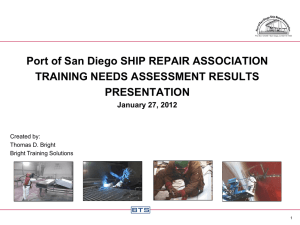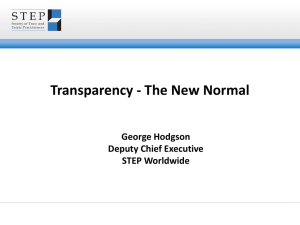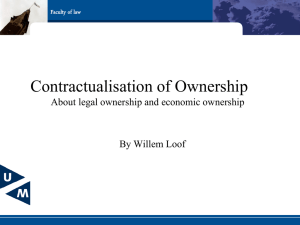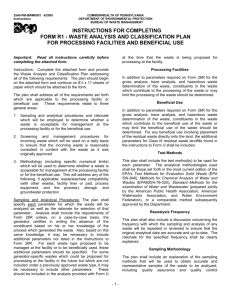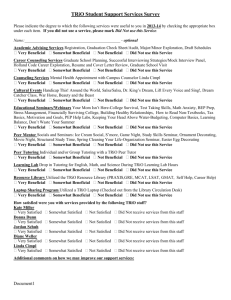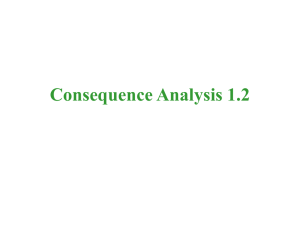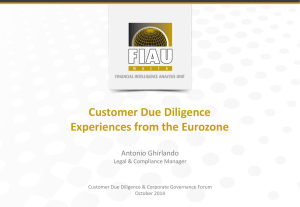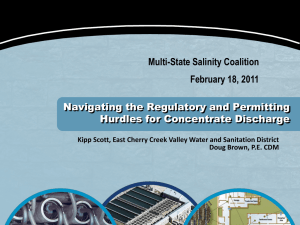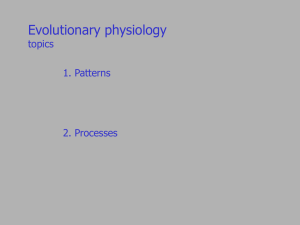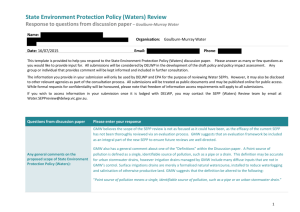Dan Tormey – Optimization Approach to Produced Water Management
advertisement
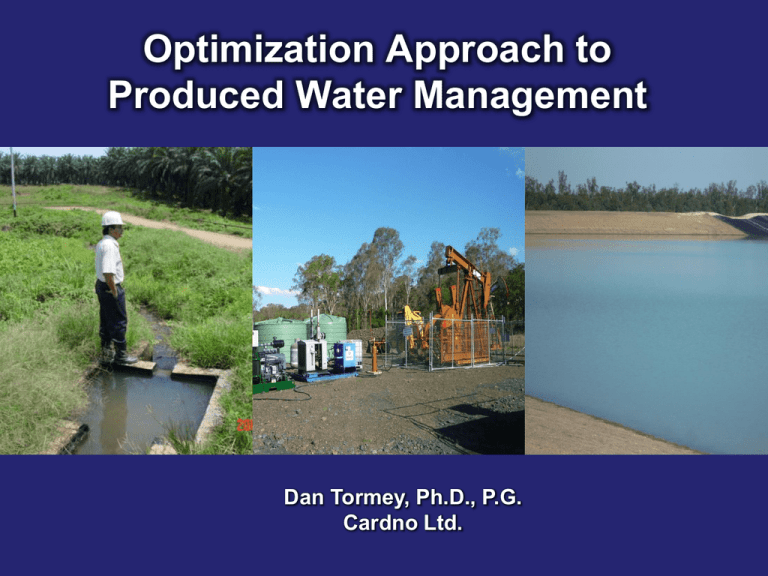
Optimization Approach to Produced Water Management Dan Tormey, Ph.D., P.G. Cardno Ltd. What is the Produced Water “Problem”? • • • • Large volumes of water produced by oil and gas Typically saline May contain other contaminants Volumes typically greater than can be accommodated by injection • Source of Public Concern Waste or Resource? United States Australia ALL produced water considered a waste Most states define produced water as a waste Prohibition on surface discharge unless benefits to wildlife or agriculture can be demonstrated Queensland redefinition: Beneficial if “no harm” can be demonstrated A New Source of Water Treated produced water used for: • Crop irrigation • Stock watering • Groundwater recharge • Wildlife habitat support • Crop irrigation • Golf course irrigation • Stock watering • Industrial uses • Stream discharge • Encouraging beneficial reuse as a component of the social license to operate Displaces demand on public potable water supplies Produced waters not created equal Variable: • Salinities • Temperatures • Other compounds • Volume and change over time Beneficial uses intensely site-specific • Agriculture • Industrial • Ornamental plants NO ONE SOLUTION How to Optimize for a Site-Specific Solution? FOUR STEPS 1. Understand the source 2. Understand the potential use 3. Understand the available treatment technologies 4. Have backup plans Step 1: Understand the Source • • • • How much water produced over time? What is the quality over time? What is the temperature over time? How much can be injected without undermining resource recovery? Step 2: Understand the Beneficial Uses Survey of local opportunities • Local water users/needs? • Ocean outfall? • Stream discharge? • Geothermal? Evaluate compatibilities • Water quality requirements • Compatibility of produced water (treated or untreated) with the use Step 3: Understand Treatment Technologies Untreated • Compatibility and reliability assessments Injection • Compatibility assessment • Affect on other groundwater resources Variety of Treatment Options • • • • • • Ion exchange Membranes (including RO) Mechanical vapor recompression Air stripping Precipitation Dilution Characterize Source Water OPTIMIZATION Identify Beneficial Uses and Water Quality Requirements Untreated - Aquifer Injection - Industrial Uses - Limited Ag Diluted/Moderately Treated - Limited Agricultural - Private Use Fully Treated - Unrestricted Agricultural Use - Discharge to surface waters Pair Beneficial Uses with Treatment - Reverse Osmosis - Mechanical Vapor Recompression - Dilution - I/X; Organic Removal - Other Options Compare Treatment Technologies and their Cost Effectiveness • Balance cost and reliability • Create a menu of uses that – Support full time operation – Consider potential loss of some uses • Understand changes over time • Create backup plans to enhance system reliability California Example Optimization Model indicated that: • Receiving water and upland studies • Reverse Osmosis Treatment was needed to sell or discharge the produced water • Designed and completed entire approval process • Brine could be reinjected to producing formation • Coordinate with equipment vendors for performance standards Australia Example Optimization Model used to determine menu of Beneficial Reuses No Treatment: Treated: • Stock watering • Industrial washdown • Dilution/discharge – Irrigation – Stream discharge – Limited opportunity for injection – Mechanical Vapor Recompression selected for treatment Ecuador/Columbia/Indonesia • Large volumes of produced water with limited beneficial reuse • Growing concern over Social License to Operate • Fact-Finding and Benchmarking • Optimization Model applied over a national territory • Establish stakeholder relationships • Opportunity to learn from USA and Australia experience Summary • A new view of produced water: New resource, not a waste • Regulatory hurdles easing as the beneficial uses are demonstrated • Regulatory uncertainty and urgent need together create a confusing marketplace • Local solutions needed • Optimization approach to balancing source, end users, and treatment technologies

